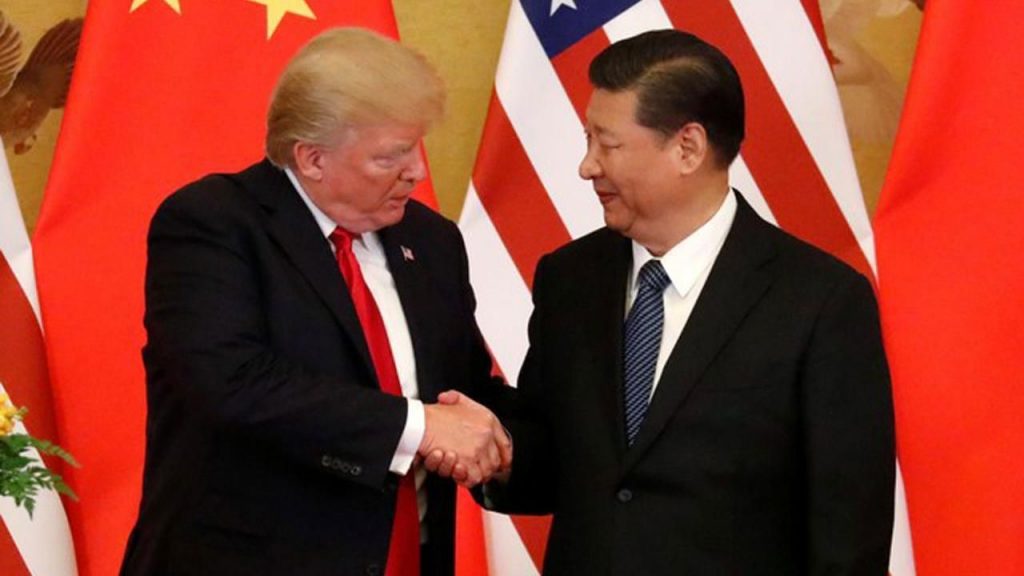
The South China Sea and Indian Ocean have been the principal theaters for Beijing’s naval ambitions in Asia. The Pacific Ocean and Mekong River, each rife with strategic advantages, could soon be next.
For the world’s second-largest economy, maritime expansion is a major means of achieving superpower stature and cementing its military, political and economic influence in Asia. Nowhere has that been more evident than the disputed South China Sea, where Beijing has reportedly installed anti-ship cruise missiles and surface-to-air missile systems on several outposts.
Meanwhile, China has steadily constructed a string of defense and commercial facilities that include naval ports in the Indian Ocean — New Delhi’s backyard.
Going forward, experts predict, Chinese President Xi Jinping’s government will ramp up its presence in neighboring waterways as it pursues regional supremacy.
“The open waters of the Western and South Pacific Ocean are maritime zones that China could aggressively expand into, and there are now signs to indicate such activities,” said Collin Koh Swee Lean, a research fellow specializing in maritime security at Singapore’s Nanyang Technological University.
Last year, unapproved Chinese vessels were spotted around waters off the eastern Philippine seaboard, an area known as the Philippine Rise to which Manila holds sovereign rights. And in January, Philippine President Rodrigo Duterte allowed a Chinese research ship to conduct a study of ocean currents in the zone before banning all foreign research ships a month later.
“Many believe the Chinese are interested in the area because of military reasons — largely intended to enhance its surveillance of the Western Pacific waters with U.S. military force concentrations in Guam and further afield in Hawaii in mind,” said Koh.
“This particularly applies to the series of Chinese marine scientific activities in those areas,” he continued.
Beijing also has designs in the South Pacific, home to remote islands such as Tahiti.
Reports emerged in April that Xi’s administration is looking to establish a permanent military presence on Vanuatu, which is located near Fiji. That comes amid widespread concern in Australia, the Pacific’s traditional dominant power, about China attempting to gain leverage over island states through billions in aid and investment.
A desire for raw materials may be influencing Beijing’s actions there.
The Chinese government is aiming to extract hydrocarbons in Papua New Guinea, wood in the Vanuatu and Solomon islands, and rare earth elements from the Pacific seabed, according to a 2017 report from the French Institute for International and Strategic Affairs.
Furthermore, “Chinese military vessels are often seen in the area, mainly space tracking ships that support the country’s space activities,” Koh pointed out, adding that “it’s just a matter of ramping up whatever they’ve already been doing there.”
The Mekong, a river that connects Myanmar, Thailand, Laos, Vietnam and Cambodia, “is another prize in Beijing’s sights,” said a June note published by Australian think-tank The Lowy Institute.
As the world’s 12th-longest river, the Mekong is a crucial lifeline for the 60 million people living along its banks, but controversial China-built dams are threatening downstream communities. Beijing has been financing and operating several hydroelectric dams on the river, with more in the pipeline. Those dams reduce nutrient-rich sediment that move downriver, allowing farmers to grow crops and affecting fish catches, critics have said.
“Chinese dams can now regulate the Mekong’s flow,” warned the Lowy note. “The impact on food and livelihoods is dramatic now, but could soon be far worse if 11 proposed mega-dams, half with some Chinese involvement, go ahead.”
And dams seem to be just one part of the equation. Beijing is also removing islets, rapids and rocks to create a shipping lane through the heart of mainland Southeast Asia to Laos, an initiative known as the Mekong River Navigation Channel Improvement Project.
“Beijing’s control of Southeast Asian rivers looks set to be the other half of its ‘salami slicing’ strategy in the region,” the note continued, referring to small, stealthy military operations that accumulate in territorial gains over time.

